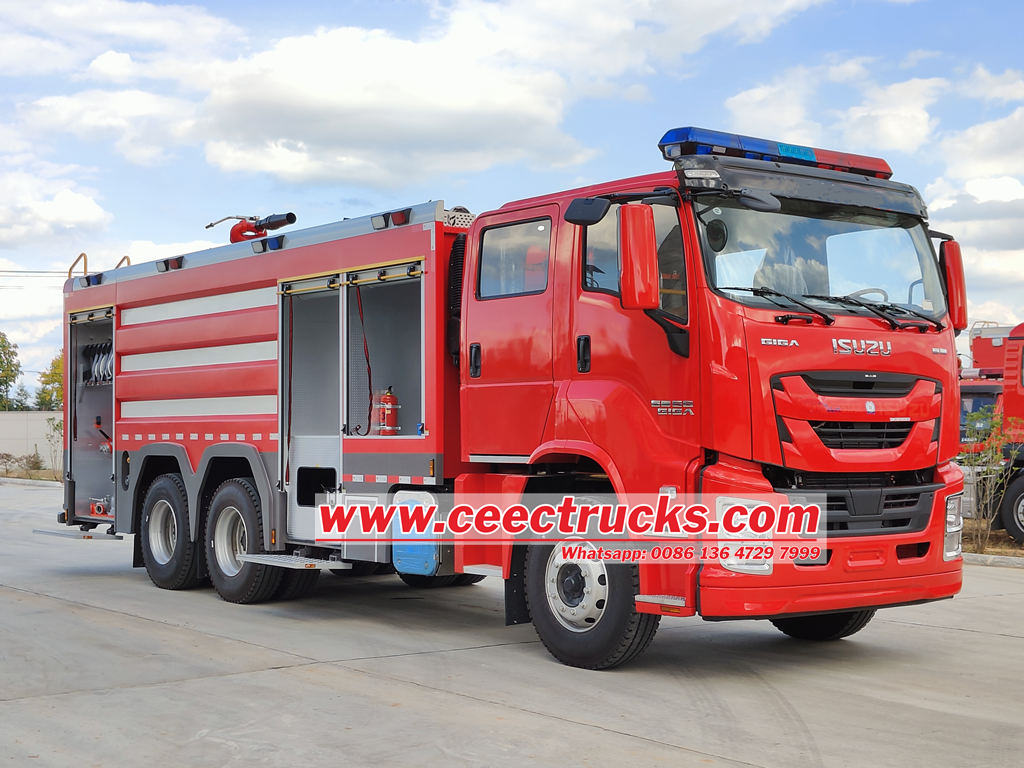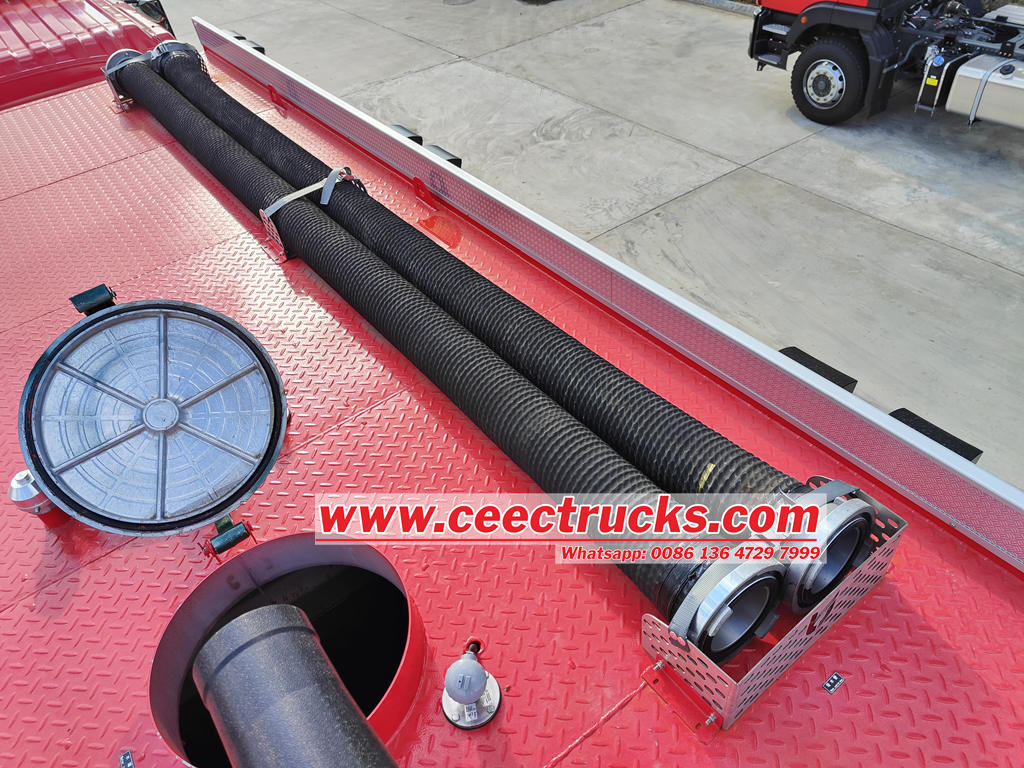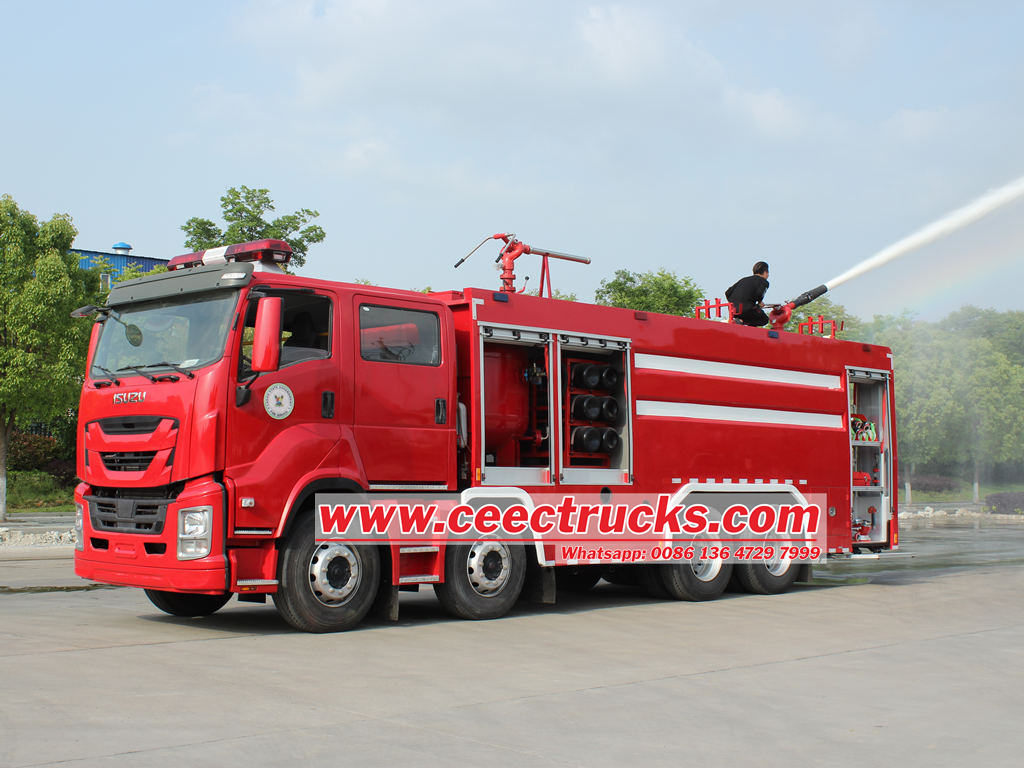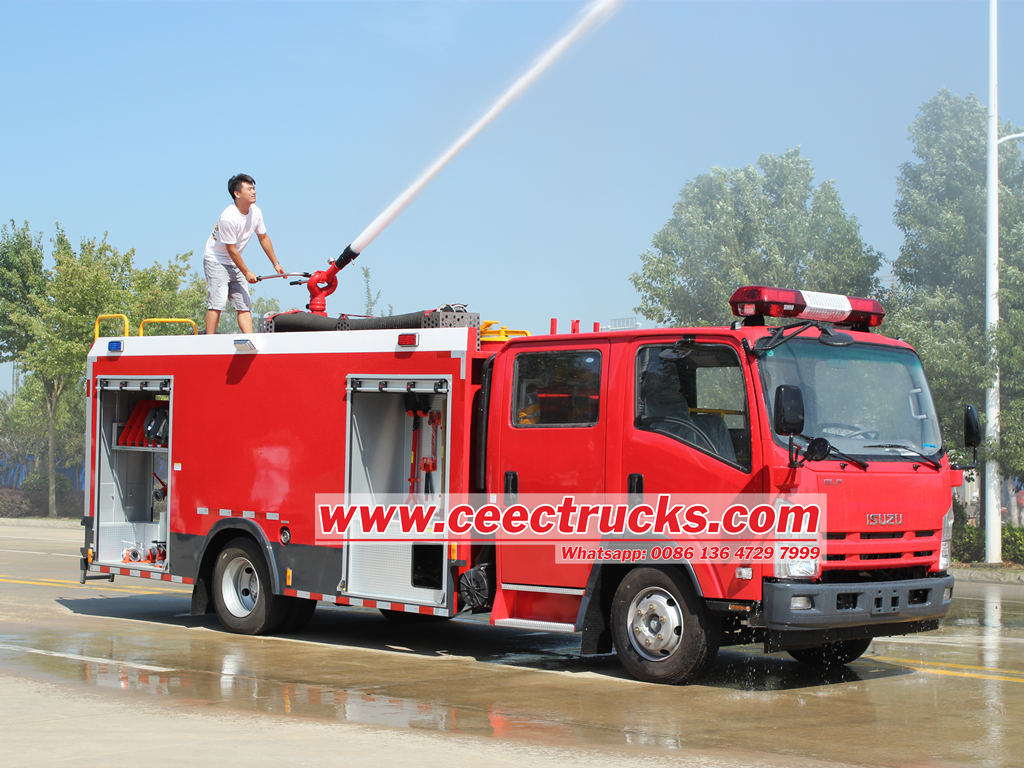
In firefighting operations, ISUZU fire trucks play a crucial role with their excellent performance and reliability. The suction hose, as a key component for drawing water from water sources, is essential for ensuring efficient fire extinguishment.

I. Understanding the Basic Structure of the ISUZU Fire Truck's Suction Hose
The suction hose of an ISUZU firefighting truck is a flexible hose used to connect the water pump inlet to an open water source or fire hydrant. It typically consists of a rubber layer, a fabric-reinforced layer, and spiral-wound steel wire reinforcement, which allows the hose to withstand the negative pressure when drawing water from open sources and the water pressure when drawing from fire hydrants. The suction hose has two types of connectors: threaded connectors and internal coupling connectors. Generally, there are four 8-meter suction hoses stored on the roof of the fire truck.
II. Steps for Using the Suction Hose
1. Parking and Positioning
First, park the ISUZU fire engine next to the water source to minimize the length of the suction hose used. This reduces bending and resistance in the hose, improving water suction efficiency.
2. Connecting the Suction Hose
Connect the suction hoses end-to-end according to the distance to the water source. When connecting, ensure that the connector types match and that the connections are tight to prevent air leaks that could prevent water from being drawn in. One end is connected to the fire pump, and the other end is connected to a water strainer placed in the water. The water strainer prevents impurities from entering the fire pump, protecting its normal operation. Additionally, the water strainer should be submerged at least 20-30cm below the water surface to prevent air from being sucked in due to vortices on the water surface. If the water source contains a lot of mud and debris, a strainer basket should be attached to the water strainer.
3. Starting the Fire Pump and Vacuum Pump to Draw Water
After connecting the suction hose, start the fire pump and vacuum pump to begin drawing water. At this time, you can hear the vacuum pump working and observe the vacuum gauge pointer slowly dropping. Wait for a few tens of seconds, and observe the water level gauge rising and water being discharged from the vacuum pipe, indicating successful water priming. After successful water priming, the engine speed can be adjusted as needed to control the flow rate and pressure of the pump.

III. Precautions When Using the Suction Hose
1. Avoid Forcibly Dragging the Suction Hose
Do not forcibly drag the suction hose on the ground to prevent wear on the aluminum connectors. The suction hose connectors are a critical part of the connection, and any wear or damage can lead to leaks or inability to connect, severely affecting water suction efficiency.
2. Ensure Tight Connections
The connectors must be tightly connected when in use to prevent air leaks that could prevent water from being drawn in. When connecting, carefully check that the connectors are aligned and tightened. For internal coupling connectors, master the correct connection techniques to ensure a secure connection.
3. Properly Lay Out the Suction Hose
The suction hose should be laid out as short and straight as possible. When using coiled suction hoses, the fire truck should be positioned where all the coiled hose can be laid out to avoid creating an "air pocket" where the bend in the hose is higher than the pump inlet, which can affect water suction. Bends in the suction hose increase resistance, reducing water suction efficiency and potentially preventing water from being drawn in.
4. Protect the Suction Hose
When the suction hose crosses a road, vehicles are strictly prohibited from driving over it, as this can damage the hose and prevent water from being drawn in. When handling and laying out the suction hose, be careful to avoid damage.
By following these guidelines, operators can ensure the effective and safe use of the suction hose on an ISUZU fire tender truck, contributing to efficient fire extinguishment operations.

